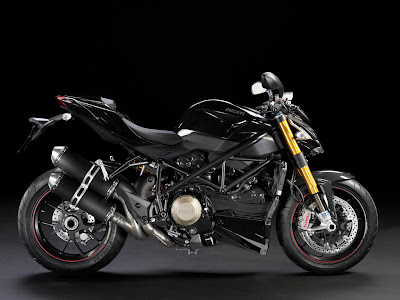Motorcycles Gallery have a new inspiration for lovers of high-class motorcycles..
Sunday, December 19, 2010
Pit Pass: MotoGP Moto2 Machines - A New Stepping Stone
MotoGP's new 600CC four-stroke Moto2 class replaces the two-stroke 250CC GP bikes as the stepping stone to the premier category
From the February, 2010 issue of Sport Rider
By Henny Ray Abrams
Photography by Graeme Brown/Geebee Images/2Snap, Gold & Goose
The sweetest Grand Prix racing machines ever built are no more. Starting in 2010, the 250cc two-strokes that honed the skills of world champions such as Kenny Roberts, Wayne Rainey, Freddie Spencer, Valentino Rossi, and Casey Stoner will be replaced by "Moto2" machines, a much cheaper 600cc four-stroke alternative stepping stone to MotoGP. And as much as 250s will be missed, it was clear that they were an anachronism in a changing world.
The final AMA 250GP championship was won by Rich Oliver in 2003. By then there was little support at the AMA national level for the purpose-built racebikes; it was no different around the world. National championships everywhere were dropping 250s in favor of modified streetbikes that made more sense from a financial and marketing standpoint. Honda and Yamaha were really the only two manufacturers offering 250cc racebikes on a production level for national-series racers. In the World Championships, Yamaha had long since lost interest, and Honda was offering little in the way of support. KTM pulled out of 250s at the end of the 2008 season leaving only Honda, Aprilia and Gilera (which were basically re-badged Aprilias).
The top-shelf "customer" Aprilias don't come cheap. The lease price for a factory Aprilia RSA250 is €1.2 million (about $1.775 million at today's exchange rate). For the same amount you can run a competitive two-rider team in Moto2 and own the motorcycles.
The Moto2 concept was floated in 2007 at the meeting of the Grand Prix Commission when it became clear that manufacturer support for 250s was cratering. "At this point we reached the stage that we were talking to all the manufacturers via the MSMA about finding a solution for the evolution of the 250 class, so everything was on the table at that point," IRTA Race Director Paul Butler recalls. "Dorna proposed that the next step should be to try to find consensus for 600cc, four-stroke, four-cylinder engines as previously proposed with a common ECU. That single engine proposal was firmed up in Qatar, April '09."
Butler said the original concept was that it be a multi-brand series, but it evolved into a control engine. He added that it rapidly got to the point that the complexities of a common ECU for different brands and wiring harnesses would be unmanageable. "It's obviously more manageable," Butler said of the control engine system. "The promoter can substitute engines or remove engines for servicing whenever they want when it's the same (brand). There's no argument there. They're prepared to exactly the same spec.
"So I think that that was almost a natural process as with the issue of having a control tire, control fuel, all of these things, so that it's a level playing field. It's just hoped that the chassis manufacturers' interest-which seems to be very strong-will create a sufficient dynamic in the whole thing to make it technically interesting. I think it will. You'll have some different solutions, different appearances and you'll have national interests as well. You'll have Japanese, Italian, British, French, American." Currently, ten different companies are committed to making frames. The engines will be built and maintained by Honda.
"The Grand Prix commission has the final shout, but obviously it was Dorna, they negotiated," with all the manufacturers, Butler said, of how the choice was made. "But it was offered to all and there were some expressions of interest, but Honda were the only one who were actually ready to nail it." The contract runs for three years. Honda will make a control ECU, which will be monitored by a 2D data-logger that the FIM will have access to. Eskil Suter will make the slipper clutches and Dunlop will supply the tires. On the tire side, only Dunlop and Michelin expressed interest and "in the end," Butler said, "Michelin pulled out. I don't know why. The way that Carmelo (Ezpeleta) told it, they just couldn't
Labels:
motorcycle show
Subscribe to:
Comments (Atom)


























